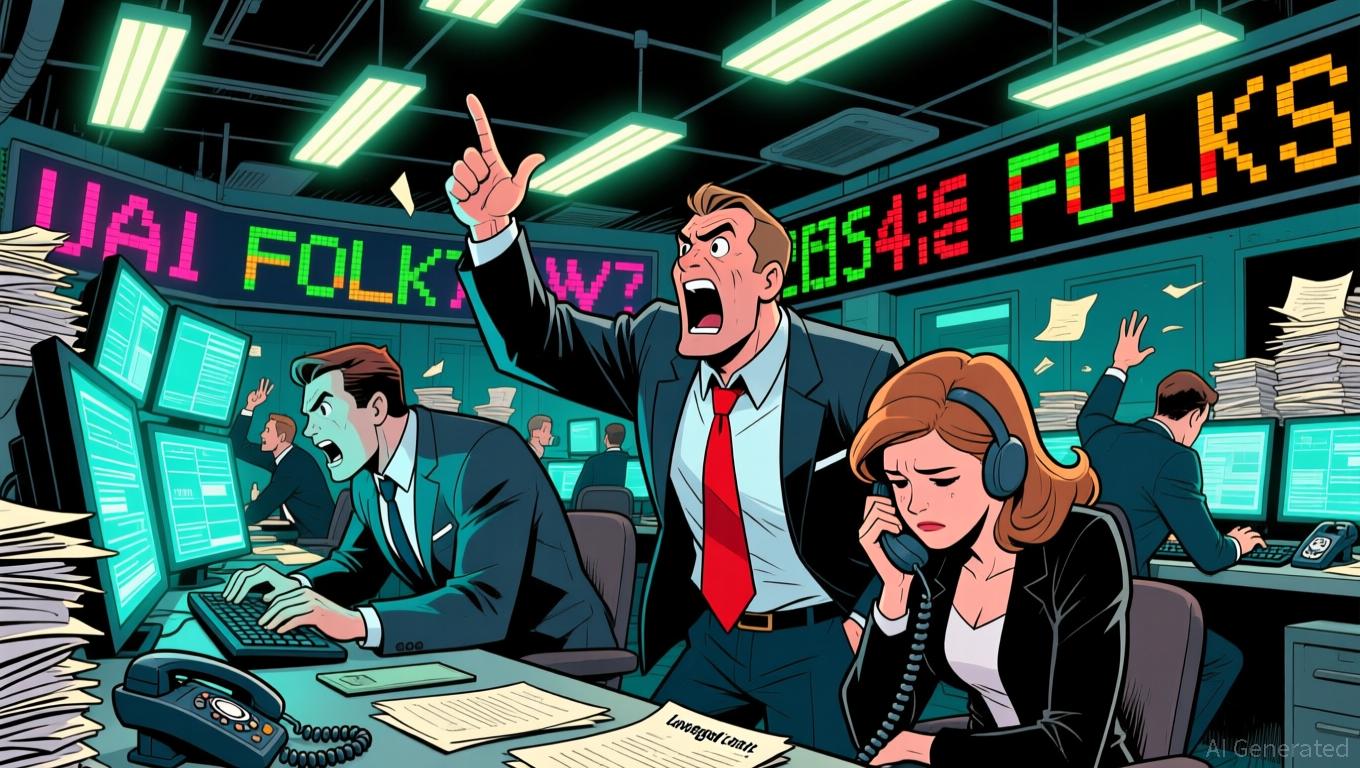Fed Backs Stablecoins While Regulations Lag Behind
- Federal Reserve officials highlight stablecoins as a transformative force in global payments, emphasizing cost reduction and cross-border efficiency. - Latin America's 60%+ crypto users adopt stablecoins like USDT to hedge against currency devaluation, with Brazil classifying them as formal assets. - U.S. banks and tech firms (PayPal, JPMorgan) leverage stablecoins for 24/7 settlements and low-fee transactions, accelerated by the GENIUS Act. - Regulatory challenges persist as bipartisan crypto legislatio
Federal Reserve leaders are increasingly viewing stablecoins as a game changer in global payments, with Governor Christopher Waller highlighting their ability to boost competition and streamline financial systems. During a recent central banking panel, Waller referred to stablecoins as an "intriguing new payment tool" that could lower costs for both consumers and businesses and speed up international transactions, according to
Waller pointed out that stablecoins function much like "synthetic dollars," using blockchain to mimic the roles of conventional bank money while offering increased speed and adaptability. "If stablecoins offer a cheaper solution, I fully support it," he stated, noting their rising use in regions where dollar banking is either inaccessible or costly. This trend is already visible in Latin America, where more than 60% of crypto users in Argentina have adopted stablecoins such as

Nonetheless, regulatory certainty remains a major challenge. The White House has announced progress on a bipartisan cryptocurrency bill designed to unify oversight of stablecoins and decentralized finance (DeFi) platforms, with lawmakers aiming for enactment by 2026, as reported by
Industry stakeholders are also calling for unified standards.
As stablecoins continue to challenge conventional payment systems, their future will depend on finding the right balance between innovation and strong protections. While some remain concerned about issues like price swings and fragmented regulation, increasing support from central banks, technology leaders, and lawmakers signals a major transformation that could reshape digital finance in the years ahead.
Disclaimer: The content of this article solely reflects the author's opinion and does not represent the platform in any capacity. This article is not intended to serve as a reference for making investment decisions.
You may also like
Bitget Connects Web2 and Web3 by Offering Zero-Fee Trades and Up to 50x Leverage on AI-DeFi Trading Pairs
- Bitget launched 50x-leveraged USDT-margined perpetual contracts for UAI and FOLKS, alongside automated trading bots to boost algorithmic accessibility. - The zero-fee U.S. stock token campaign and Kite (KITE) listing aim to bridge Web2/Web3 by integrating traditional assets with blockchain infrastructure. - With 120M+ users, Bitget's UEX model combines centralized efficiency with tokenized finance, targeting AI/DeFi growth through macroeconomic and onchain exposure.

Bitcoin News Update: Block's Revenue Falls Short Despite Positive Outlook
- Block's Q3 earnings and revenue missed estimates, causing a 12% post-market stock drop. - Square's GPV grew 12% YoY, and Cash App's gross profit per user rose 25% to $94.16. - The company raised 2025 gross profit guidance to $10.24B but faces margin durability concerns. - Bitcoin initiatives, including $2B in Q3 revenue, face regulatory scrutiny and market volatility. - Analysts highlight weak profit flow-through and intensifying peer-to-peer payment competition.
XRP News Today: Institutions Remain Hopeful Amid Technical Challenges: XRP and BNB Face Pivotal Moment in Crypto Market
- XRP gains institutional traction via Ripple's $500M funding at $40B valuation, expanding into custody and stablecoins. - BNB holds $1,040 support with 7.5% monthly gains, signaling potential $1,320 breakout amid rising volume. - XRP faces bearish technical indicators (RSI 40, Death Cross) despite outperforming BTC/ETH, creating market uncertainty. - Crypto polarization emerges as XRP's real-world utility clashes with low retail demand, while BNB's liquidity underscores market speculation.

Bitcoin’s Growing Embrace by Institutions: Driving Continued Upward Momentum in November 2025
- U.S. regulatory reforms and SEC's pro-innovation stance in 2025 normalized institutional Bitcoin adoption, with 172 public companies now holding BTC. - Spot Bitcoin ETFs like BlackRock's IBIT ($100B AUM) drove $1.38B daily inflows, transforming Bitcoin into a liquid institutional asset class. - Macroeconomic tailwinds including Fed rate cuts and dollar weakness positioned Bitcoin as a hedge against inflation, with 6.7% of its market cap now ETF-backed. - Blockchain infrastructure advances (3,400 TPS, $1.
